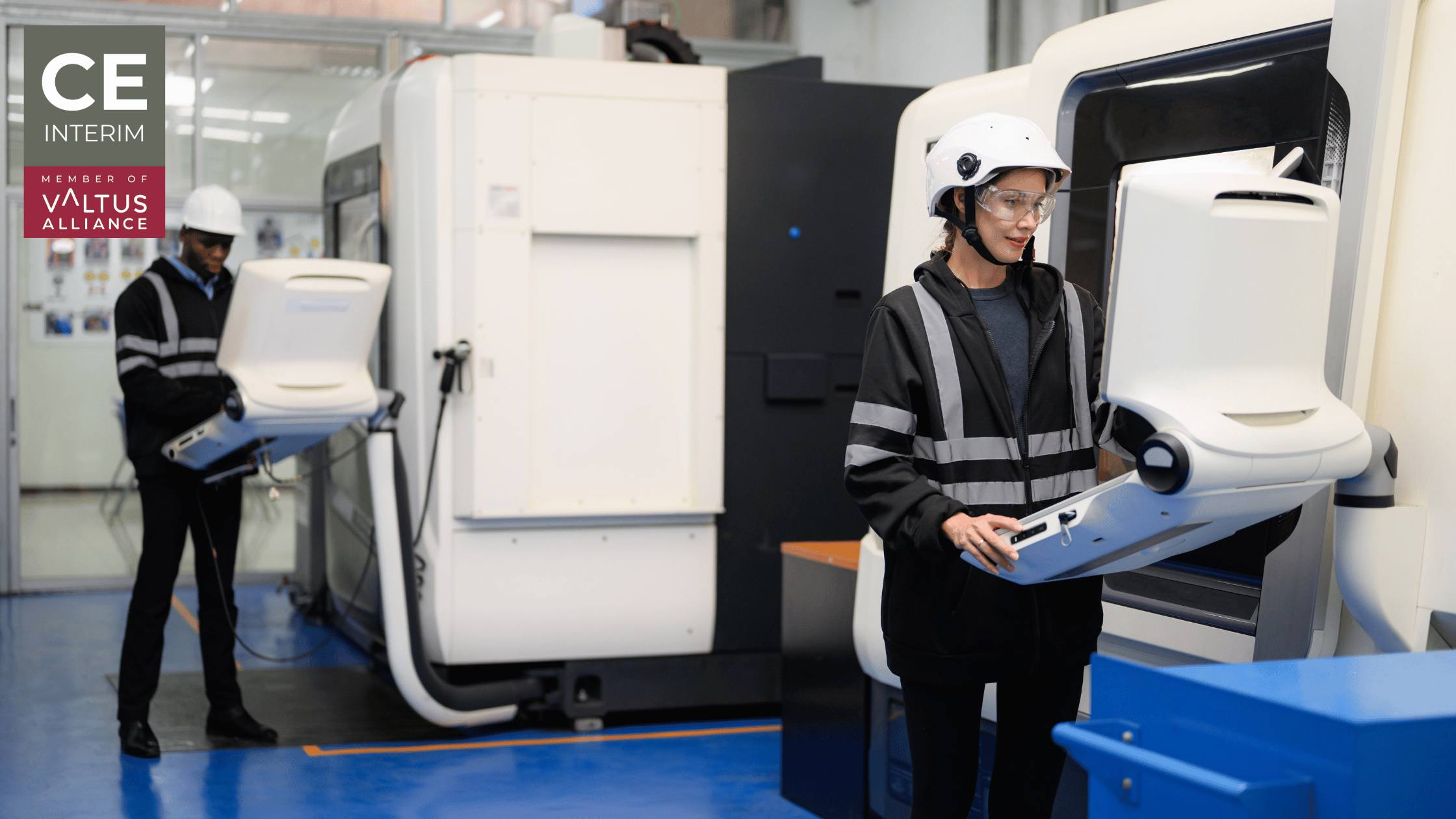Nu aveți suficient timp pentru a citi articolul integral? Ascultați rezumatul în 2 minute.
German SMEs have embraced AI in principle. But in practice, they remain stuck in a cycle of pilots, proposals, and PowerPoints.
Thanks to public initiatives like KI im Mittelstand, awareness has skyrocketed. Many firms now have a pilot project or digital roadmap somewhere in the organisation. Yet few have crossed the line from proof-of-concept to real operational gain.
The gap is not funding or curiosity. It’s traction.
Funding Received, Impact Still Missing
Most CEOs assume that if an AI initiative is live, progress is being made. But months later, nothing has changed on the factory floor.
The problem? These pilots are often owned by IT departments or external consultants with no real authority. Operational teams don’t trust them, and leadership doesn’t stay involved beyond launch.
Without clear KPIs tied to uptime, yield, or margin, the pilot becomes a side project. It may look promising, but it doesn’t deliver impact.
Why the Pilot Becomes the Graveyard
AI in industrial settings isn’t like adding a new CRM. It requires integration with production, finance, supply chain, and HR systems. Most pilots never scale because:
- There’s no cross-functional buy-in.
- The project leader can’t influence multiple departments.
- There’s no 90-day execution rhythm.
These gaps are not technical. They are structural.
What Industrial AI Looks Like at Scale
I. From Strategy to System
When AI works in industrial SMEs, it looks boring – and that’s the point.
Smart use cases are simple and ROI-driven:
- Predictive maintenance for critical equipment
- Production scheduling with dynamic constraints
- Inventory optimisation with real-time demand signals
These are not innovation showcases. They are competitive systems that reduce waste, boost throughput, and improve reliability.
The question isn’t “Are we experimenting with AI?” The question is “Is it saving us time and money every week?”
II. AI as Infrastructure, Not Innovation Theatre
Too many firms treat AI as a novelty. They build dashboards, host internal demos, and declare digital success.
But successful adoption treats AI like infrastructure. It disappears into decision-making. Operators trust it. Planners depend on it. Managers no longer debate whether it works – they just use it.
This shift happens when machine learning feeds real decisions, and human correction feeds the model.
The Mittelstand’s Real Constraints
I. The Missing Roles, Not the Missing Tech
Most SMEs already have data. They may even have a partner or startup lined up. What’s missing is leadership capacity.
AI isn’t an IT initiative. It’s a business transformation.
To succeed, firms need someone who understands operations, data, and process discipline. Not a “digital innovation officer,” but someone who can execute across domains.
That person is often missing.
II. What the CEO Must Own Personally
No AI transformation succeeds without visible C-level ownership.
CEOs must define the business case. They must set the pace. They must personally remove blockers.
If AI sits in middle management without sponsorship, it will stay there – no matter how well-funded or well-intentioned the project is.
How to Escape the Pilot Trap
Four Real-World Shifts That Create Momentum
1. Link AI to real KPIs. Not just “improve process,” but “reduce downtime by 15%.”
2. Appoint one accountable lead. Someone who can align IT, production, and finance.
3. Start narrow. Don’t aim for full-factory AI. Choose a single use case with fast ROI.
4. Operate in 90-day loops. Set visible milestones, track results, course-correct early.
Speed matters – not just to deliver value, but to build confidence across the business.
Interim Acceleration as a Bridge to Scale
Many Mittelstand firms don’t lack ambition. They lack neutral, senior hands-on capacity to drive AI through friction zones.
Interim transformation leads can bring pace, structure, and cross-functional fluency. Within weeks, they can shift AI from concept to traction.
La CE Interimar, we support this acceleration by placing interim leaders who specialise in digital execution – not strategy, but operational rollout. They integrate tech into real workflows, fast.
Final Thought: Beyond KI im Mittelstand Is Execution Discipline
The Mittelstand has the tools. The government has supplied funding. Vendors are abundant.
The missing link is execution.
Real AI adoption doesn’t start with a pilot. It starts when business leaders treat AI like a business system, not a tech trend.
The next phase isn’t about awareness. It’s about operationalisation – making AI part of how the business works, learns, and competes.
Those who move now will turn intelligence into advantage. Those who wait may find themselves watching competitors scale what they only piloted.





